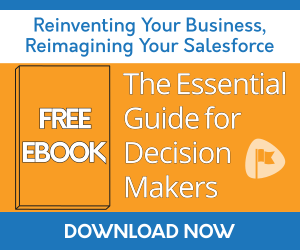How Software Can Make You a Better Problem Solver
2020/11/03

Problem solving is a skill needed for all job fields and levels. In your own life, you may have individuals you go to for advice often because they're a better problem solver than others, but what makes a good problem solver?
It's not a straightforward answer. This is partially because both the solution and the journey of coming up with a solution are hard to "measure." Secondly, none of us have a crystal ball to tell how things would have turned out had we gone down another path.
However, we can all think of times where we feel we "made the wrong choice." This can be scary when there are serious consequences for our actions, both positively and negatively (the difference between choosing a software that helps productivity go up, versus choosing an expensive software that takes a year to implement, and then nobody uses it).
Our brains rely on short cuts to make decisions, which are often helpful for our survival. But sometimes they can steer us in the wrong direction. Here are just some of the problems we may encounter to making the best decision possible:
We're Biased
There's a whole Wikipedia page dedicated to the types of biases one could have, but a small sample of problem solving biases include anchoring, sunk cost fallacy, confirmation bias, and stereotyping. These biases may be compounded if there's a lack of diversity in the leadership team, and could steer decisions that may not be best for everyone.
Time Constraints
Most of us are pressed for time in our jobs. In order to meet deadlines, we may do poor searches or not dig deep enough into a problem and all possible solutions. When we're in a hurry, we may also opt for the simplest or most obvious solution instead of being creative and thinking outside of the box.
On the other hand, sometimes it was a good decision when it was made, but by the time a solution gets put in place, everything about the situation has changed. Some larger decisions in companies can take a long time to get passed. This often makes companies slower to react to significant changes (think of how quickly different companies took action at the beginning of COVID-19).
Organizational Issues
Each type of decision should have documented steps to take for implementation. For example, the difference between creating a new process within your own division versus a process that affects the whole company. If your company lacks formal procedures on how to accomplish a goal, then it isn't surprising when results are all over the place. Coming up with a new problem solving process for every decision will only add more time to solving the initial problem.
People also need to be in a safe place to voice their opinions. If the work environment poses threats from leaders about challenging their thoughts, employees will either not offer any suggestions of their own, or choose an option based on peer pressure.
Solution
All of this leads to the question, "how do we change it?" When the limiting factors are human behaviors, then you can turn to computing power! Prioritization Helper by Passage Technology has "pairwise comparisons" to help make decisions. Users first compare the importance of criteria, two at a time. For example, do you care more about a potential employee's interview or resume, and by how much more? Then users rate how well each option fits a specific criteria. Making these smaller sized decisions will help you think more rationally than trying to think about the problem as a whole.

Even though complex decisions are too difficult for our brains to accurately calculate mathematically, Prioritization Helper quantifies criteria and options that traditionally are difficult to measure with hard numbers. Rather than prescribing a "correct" decision, Prioritization Helper assists decision makers in finding one that best suits their values and their understanding of the problem.
Prioritization Helper mitigates bias by making it easy to invite all stakeholders to weigh in, thereby increasing the diversity of the decision makers. If you're deciding on new software, Sales may be focused on its ease of use, while Admins care more about its integrations to other systems. It also has a "inconsistency rating." The higher the percentage, the more a user's results contradicts itself. This gives you a chance to go back and fix any mistakes, or think about your choices longer. Prioritization Helper does all of this while still making the decision making process faster and better structured to come up with the most ideal solution for your company. Leaders can feel confident that the long-term plans they're making today will pay off.
| How You Can Achieve Your Rollup Goals With Rollup Helper | Passage Technology Blog | Passage Technology News and Updates – 2020 Fall Edition |

